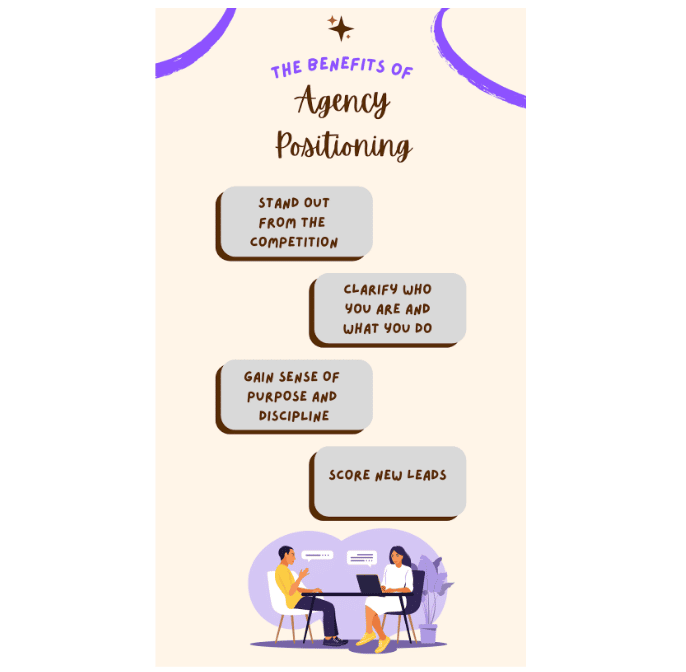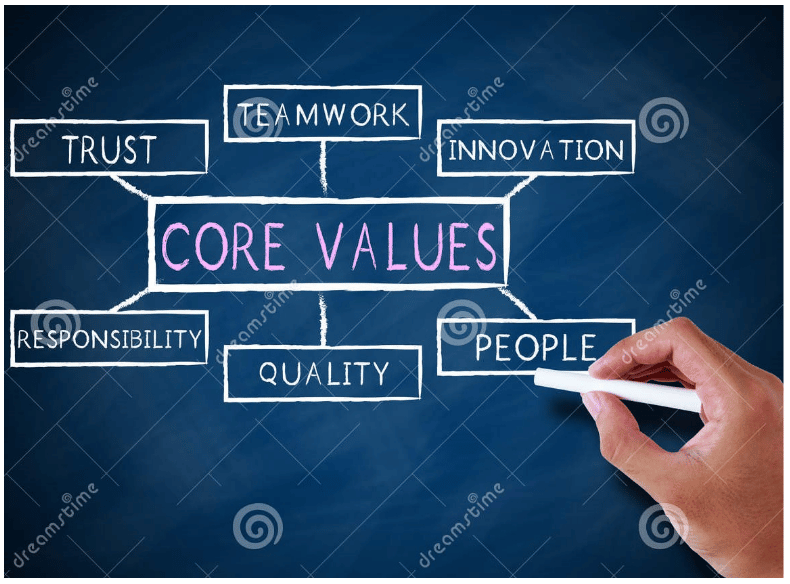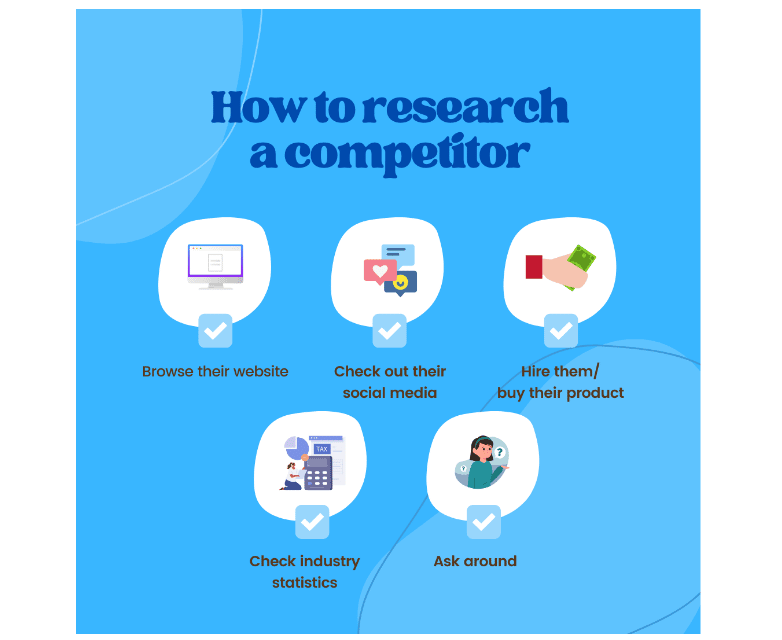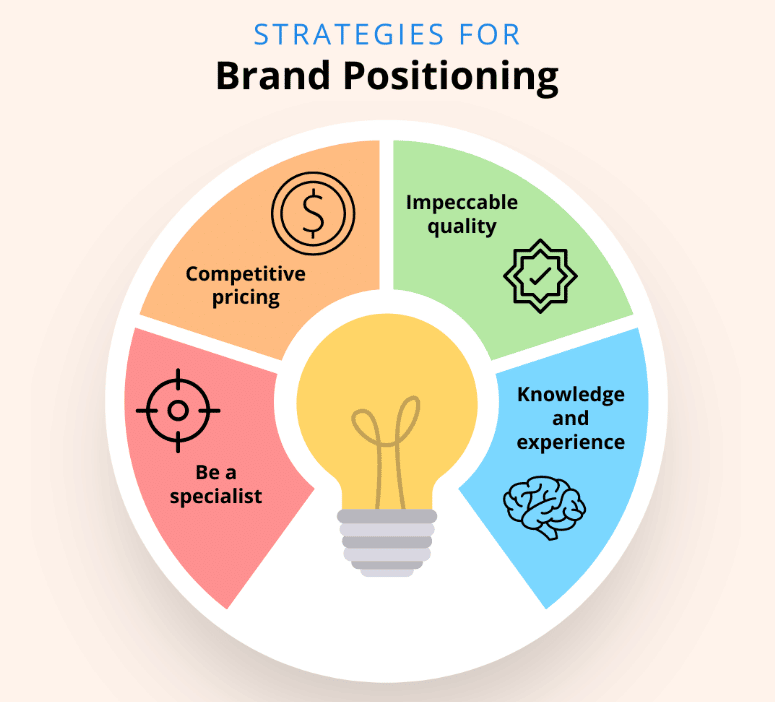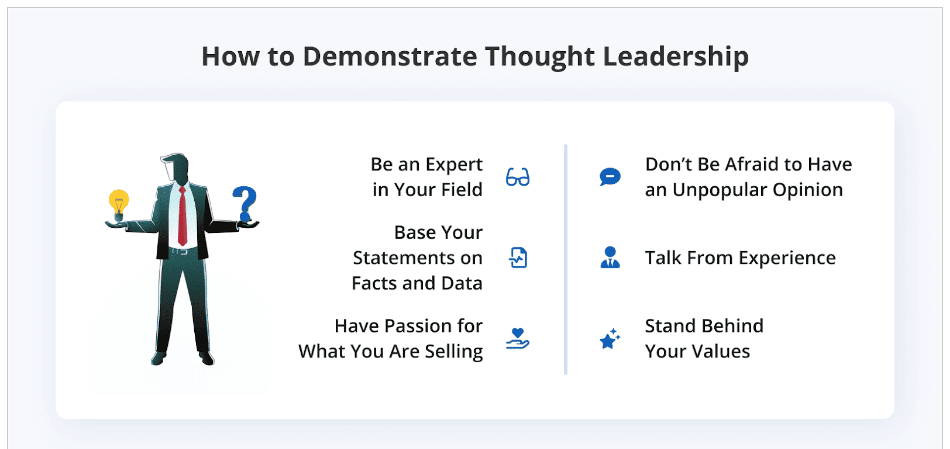Positioning is a vital skill for the agency that wants to get ahead. Agency positioning can mean the difference between fast growth, and sinking into obscurity.
The proper positioning will give you crucial visibility in a crowded market. Whether they’re looking for top-notch advertising management or just want to enquire, yours will be the name that stands out.
That edge over your competition is enough reason to work on your agency positioning. But there’s more. As well as helping you stand out from the crowd, agency positioning will help you improve your branding. It will give your brand an identity, direction, and focus.
How can you achieve all this? This guide to agency positioning will help.
Image created by author
What is agency positioning?
Let’s start with the basics. What do we mean by ‘agency positioning’?
Imagine that you, and your competition are all gathered together for a group photograph. It’s going to be a big photograph, with many faces. You want customers to focus on your face, and think, “Yes, that one. That’s the agency for me!”
Some of the brands in this ‘photograph’ will be naturally eye-catching. Maybe they are big or just good at pushing their way to the front of the crowd. But there are plenty of ways for your brand to get attention.
Image created by author
This group photo (probably) doesn’t exist in the real world. But something like it exists in the minds of your customers. When you ‘position’ your agency, you are building up, and promoting those distinctive features that will make you stand out.
How can you do this? Let’s take a look.
How to position your agency
Positioning your agency is mostly about understanding yourself, your competitors, and your customers. By following these steps, you can maneuver your brand into the perfect position, and generate great leads.
Step 1: Figure out what you can offer
The critical thing to remember about brand positioning is that it’s not all about appearances. Yes, grabbing attention is important, but you need to be able to follow through with the goods.
For example, you can’t position yourself as having the best cloud-based phone system in Australia, and then keep potential customers on hold because your landlines are too busy. You must back up your position with genuine, actionable skills, resources, values, and branding.
So, the first thing to do when positioning your brand is to figure out what you have to offer.
What are your USPs? What sets you apart from your competition? Why, exactly, should clients choose you over your competitors?
Maybe you’ve got tons of experience, a fantastic creative team, or a thought leader in your industry. You could even position great security as your USP. Whatever makes your agency uniquely excellent, that’s what you need to focus on in your positioning.
As well as your USPs, you must consider your brand values. What do you believe? What are you passionate about? What is your mission as a brand? And how can you translate those things into value for your clients?
By understanding who you are and what you can offer as a brand, you will be able to position yourself more effectively. But there’s more to it than this. You will also be more self-aware as an agency, and more able to develop a brand identity. All of this will help you to grow.
Step 2: Research your competitors
If you’re lucky enough to be the only brand in your industry, the positioning will be easy. You just set out your stall, and ensure people can find you. However, it’s improbable that you’re the only brand that does what you do.
It’s more likely that you’re sharing your market with several competitors. As such, a big part of positioning will involve making space for yourself among the other brands.
This doesn’t necessarily mean barging them out of the way. It means looking for gaps, and opportunities where you can make yourself noticed. So, compare your competitors to each other, and yourself.
Look at:
- What your competitors are offering. Where are they giving the most value to clients?
- How your competitors brand, market, and position themselves.
- Your competitors’ relative strengths, and weaknesses.
- Your competitors’ USPs.
By doing this, you will establish a set of reference points by which you can position your own brand.
For example, you may discover that one competitor is great at talking to investors and another has a fantastic email marketing game, but neither has customer service as good as yours. You can capitalize on this by promoting outstanding customer service, and positioning yourself as the agency with the best customer service.
Image created by author
How do you research your competitors? Well, that’s a whole topic within itself, but some effective methods include checking out your competitors’ social media, their websites, and their offerings.
One of the best ways to research your competitors is to try them out. For example, if you can find email addresses for your competitors, why not sign yourself up for their email marketing? It’s a quick and effective way to get a feel for their tone, branding, values, offering, customer experience, etc.
You could even set up a video call with other industry professionals if you have a strong network. This is a fast and insightful way to get a handle on your competitors, their market positions, and ways that you can differentiate yourself.
Step 3: Set out your stall
Now that you know what you are good at and what your competitors are good at, you should have some idea of how you can position yourself for your best advantage.
You can ‘set out your stall,’ i.e., position yourself, by telling the world about your unique aspects. Make positioning a key focus of your branding, and marketing strategy. Take every opportunity to maneuver into position, and then grow your business with a uniquely positioned tone of voice.
If you’re struggling with a positioning strategy, here are some popular strategies that could help:
Image created by author
Specialization
If you’re very effective at one particular thing, you could promote that as your USP.
Let’s say you’re the best landing page builder in the business. Your competitors are good all-rounders, but you have the edge regarding landing page build.
You could position yourself as a landing page specialist by putting this element of your work front and center of your branding, and promotional material.
Pricing
The bottom line is always important to people. Maybe your price could be what sets you apart from the competition.
Before you start slashing prices, however, a word of warning. You need to be able to cover your overheads, so be realistic about what you can afford to cut.
Remember also that a low price isn’t always an attractive price. People know that excellent quality service costs money, so they will assume that cheap service is a low-quality service.
So, be smart about your pricing strategy. If you think it can give you a competitive edge without damaging your bank balance or reputation, go for the price cut. But remember that even a price hike can bring you into a new league of customers.
Quality
If you can genuinely offer the best product/service on the market, tell the world! Positioning yourself as the best quality brand is a fantastic way to differentiate yourself. You can position yourself as a high-quality agency in various ways, perhaps highlighting an impressive track record of results. You could talk about your impeccable customer service. You could bring out testimonials from clients who are convinced that your service is the best experience they have had.
Again, remember that you need to be able to back up your claims with factual reality. If someone asks you about your contact center, and your response is ‘what is hosted contact center?’, then maybe the customer service angle isn’t for you. But that doesn’t mean you can’t position yourself as high-quality in other ways.
Expertise
Image sourced from Devrix
Experience, knowledge, and expertise are worth a lot. People will often trust the more knowledgeable and experienced agency over the agency with the flashy branding, and high-profile clients.
If you think you fit this slot, work on your thought leadership. Thought leadership marketing will help you to position yourself as a voice of knowledge, and authority in your industry.
Thought leadership is particularly good for B2B businesses but also helpful for B2C.
Thought leadership marketing includes things like:
- Creating educational, and informative content.
- Weighing in on current industry topics, and events (for example, by giving interviews to the media).
- Commissioning, and publishing research.
Use agency positioning to build your brand and bring in new clients
Agency positioning is the key to getting seen, and getting hired. Using the tips from this guide, you can get into the perfect position for your brand, and start bringing in new clientele.
Remember, however, that your position isn’t static. Customers change, and so do markets. You will inevitably have to change your position to stay relevant.
So, keep a close eye on who you are, your competitors, and your audience. If your brand position is no longer consistent with your market, it’s time to shake things up again.


